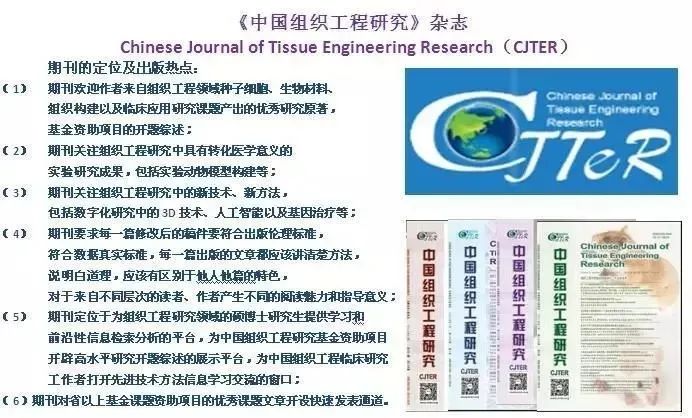In 1979, the concept of using 3D medical imaging, particularly reconstructing physical models from computed tomography data, was first proposed. Although there were no rapid prototyping or 3D printing systems at that time, the idea could be realized through subtractive manufacturing or milling. Before the advent of 3D printers, the primary method for creating prototype components was through computer numerical control (CNC) machines. Computers controlled the lathes, milling machines, routers, and grinders needed to manufacture parts. This technology starts with a blank material and is gradually shaped, although sometimes manual refinement is still required. That same year, the first anatomical model of a pelvis, made from ground polystyrene blocks, was created, marking the first instance of a model constructed using medical imaging. By the late 1980s, the emergence of the first commercial 3D printer not only enhanced understanding of 3D medical imaging technology but also drew attention to the applications of 3D printing in the medical field.
Stereolithography (SLA) is a technology that uses computer-controlled lasers to harden liquid polymers or resins layer by layer. SLA was the first viable 3D printing technology, applied in the biomedical field for the first time in 1994. The first 3D printers could only print using rigid materials, making 3D printing more suitable for issues related to hard tissues; orthopedic surgery was one of the first specialties to adopt this technology.
Today, 3D printing is being widely applied in clinical practice at an astonishing rate. 3D printing technology has been used to print individual anatomical models, implants, prosthetics, external fixators, splints, and surgical instruments for patients. The long-term utility of this technology in the medical field will further validate its importance in medical applications.
Paper Analysis
Database Searched: Medline Search Tool: Literature Bird/PubMed Search Date: November 7, 2022
Search Terms: “three-dimensional printing” or “additive manufacturing” or “3D Printing” or “Rapid Prototyping” or “3D Manufacturing” or “custom implants”
Distribution of Research Papers on 3D Printing Technology by Time and Country
A total of 27,411 papers on 3D printing technology have been published in the Medline database worldwide; Literature Bird has analyzed the latest 10,995 papers.

Country Distribution shows that the number of articles published by the United States is 2,912, accounting for 26% of the total; China has published 2,668 articles, accounting for 24%, ranking second; Germany, Italy, and India rank third to fifth.
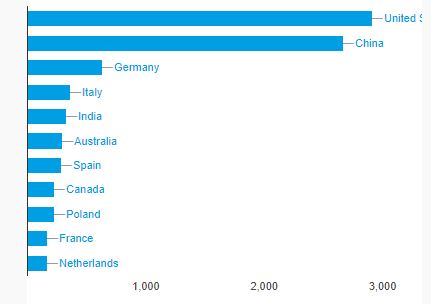
Academic Institution Rankings
Chinese universities such as Sichuan University, Central South University, Zhejiang University, Shanghai Jiao Tong University, Xi’an Jiaotong University, Huazhong University of Science and Technology, and the UK’s London Medical School have published a significant number of papers.
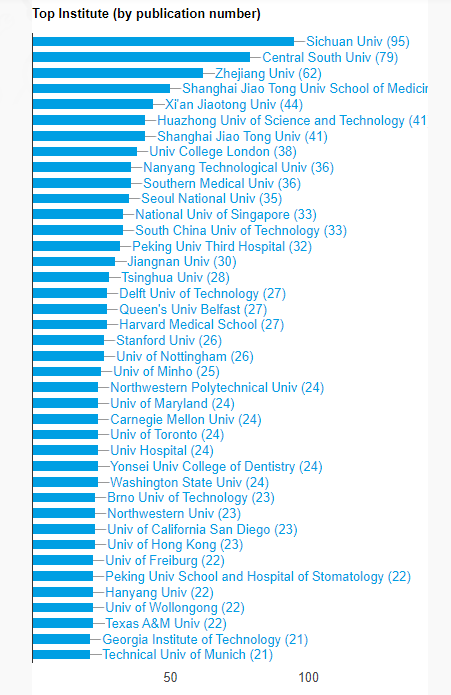
Hospitals with the Most Published Papers on 3D Printing Technology
The Ninth People’s Hospital of Shanghai Jiao Tong University, West China Hospital of Sichuan University, Third Hospital of Peking University, West China School of Stomatology of Sichuan University, Brigham and Women’s Hospital in the USA, Mayo Clinic in the USA, Asan Medical Center in South Korea, and UMC Utrecht in the Netherlands are among the hospitals with the most papers published on 3D printing technology.
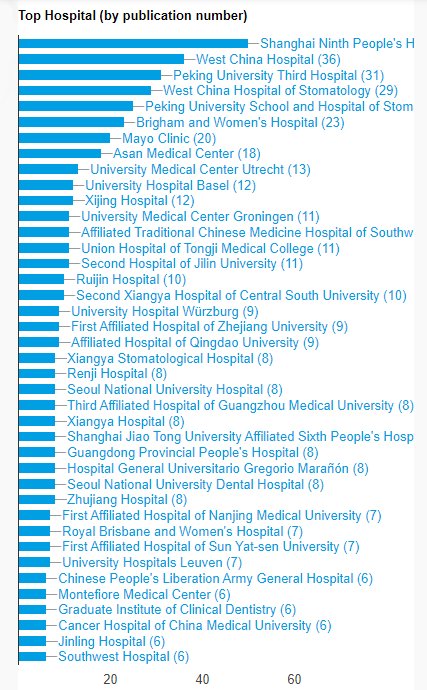
Journals Published
Globally, the journals with the most articles published in the field of 3D printing technology include Materials (Basel) (IF=3.748), Biopolymers (IF=2.24), ACS Appl Mater Interfaces (IF=10.383), Sci Rep (IF=4.996), Micromachines (Basel) (IF=3.523), Front Bioeng Biotechnol (IF=6.064), and Sensors (Basel) (IF=5.743).
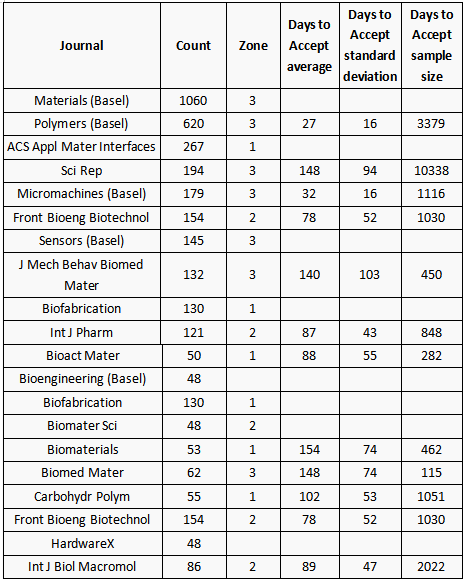
Hottest Research Topics
Globally, research in the field of 3D printing technology mainly focuses on dentistry, hydroxyapatite materials, and joint replacement.
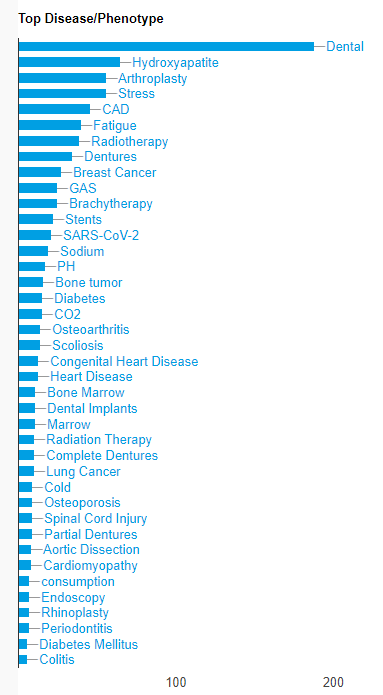
Most Active Scholars
Prof. Martin Pumera from the Singapore Nanorobots Research Center, Prof. Yu Shrike Zhang from Brigham and Women’s Hospital in the USA, Prof. Dongwoo Cho from POSTECH in South Korea, Prof. Cyrille Boyer from the University of New South Wales in Australia, Prof. Abdul W. Basit from University College London in the UK, and Prof. Amit Bandyopadhyay from the University of Washington in the USA are among the most active scholars in the field of 3D printing technology.

Limitations of This Analysis:
If spellings differ, the database may treat the same entity or funding differently.
Due to the limitations of the search, data analysis may likely have inaccuracies; experts are encouraged to provide corrections.
